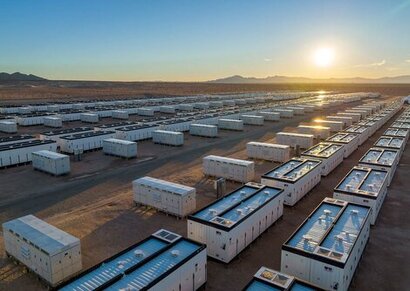
According to the authors of a new report by the Institute for Energy Economics and Financial Analysis (IEEFA), Haneea Isaad (Energy Finance Specialist at IEEFA, Pakistan) and Syed Faizan Ali Shah (a renewable energy and power systems expert), the convergence of rising energy prices and falling costs for Distributed Energy Resources (DER), such as rooftop solar photovoltaic (PV) systems and BESS, has encouraged consumers to adopt decentralised energy solutions.
“Pakistan is leading a solar revolution, with 17 gigawatts (GW) of solar-based capacity deployed across both distributed and utility-scale levels” said Ms Isaad. “Integrating BESS to these systems is the next logical step, especially in decentralized, behind-the-meter applications.”
Pakistan imported approximately 1.25 gigawatt-hours (GWh) of BESS in 2024 and another 400 megawatt-hours (MWh) in January and February 2025.
IEEFA estimates that BESS imports could reach 8.75 GWh by 2030 if current trends continue, and annual additions of BESS remain leveled at 1.25 GWh. However, the rapid increase of solarisation and generation capacity also presents significant challenges.
The report contains financial simulations to estimate the payback period for residential, commercial, and industrial BESS configurations and assesses how the potential trend of consumers exiting the grid on a large scale may reshape Pakistan’s energy sector dynamics.
BESS has become vital for energy independence and resilience across Pakistan’s residential, commercial, and industrial sectors. These systems help reduce peak load and energy costs, improve reliability and power quality, and support peak demand management.
Despite high taxes and customs duties that add almost 50 percent to BESS costs, the solar-BESS combination still offers shorter payback periods of 3-6 years across all sectors.
“BESS stores cheap electricity produced during the day and discharges it during the evening peak” added Ms Isaad. “Its inherent peak shaving capabilities help flatten the evening peak demand, thereby reducing the need to ramp up fossil fuel-based plants.”
This could lead to the underutilisation of expensive liquified natural gas (LNG) peaking plants, which are locked into the grid for the next 23-28 years, further reinforcing Pakistan’s surplus LNG dilemma. The country had to defer its LNG agreement with Qatar for 2025 and delay deliveries until 2026 due to low utilisation of LNG-based power plants, the main off-taker for contracted LNG.
As the government considers eliminating incentives provided to net-metered consumers to slow the pace of solar PV additions, consumers may be motivated to add BESS to existing solar PV setups. This may further reduce consumer reliance on the grid and drive consumers away from the grid altogether.
“Due to contractual obligations resulting from long-term power purchase agreements, the exit of paying consumers from the grid leads to an increase in fixed costs or capacity payments for those that remain on the grid” said Mr Shah.
Energy stored in and dispatched by BESS can permanently reduce grid demand, potentially reaching 11.5 terawatt-hours (TWh), or 8.4 percent of the actual 2024 electrical demand from the grid annually, depending on the rate of BESS addition to existing solar PV installations.
The authors suggest that the government should carefully assess new capacity additions and shift contracts to a ‘take and pay’ basis so utilities only pay for actual energy purchased from plants. This would prevent peaking plants from becoming stranded assets.
Diverse DER locations and the increasing energy feedback from solar PV systems across major load centres have created issues such as reverse power flow and negative loading on distribution transformers in feeders with excessive rooftop solarisation.
“Successfully integrating DER requires hosting capacity analysis in the distribution network” added Mr Shah. “We recommend the widespread adoption of smart meters, consumer and transformer monitoring systems, and feeder-level automation and modernisation to support this integration.
A cohesive Information and Communications Technology (ICT) strategy to enhance data collection and communications is also needed to improve distribution system planning with a bottom-up load forecasting approach, which could more accurately reflect localised demand dynamics.
“This method allows for granular insight into consumption patterns, the impact of DERs, and local constraints, which are often overlooked in top-down forecasting methods” said Ms Isaad. “A more realistic estimation of future capacity requirements helps avoid over-procurement or underutilised infrastructure investments.”
For additional information:
Institute for Energy Economics and Financial Analysis (IEEFA)
Battery storage and the future of Pakistan's electricity grid (Report)

